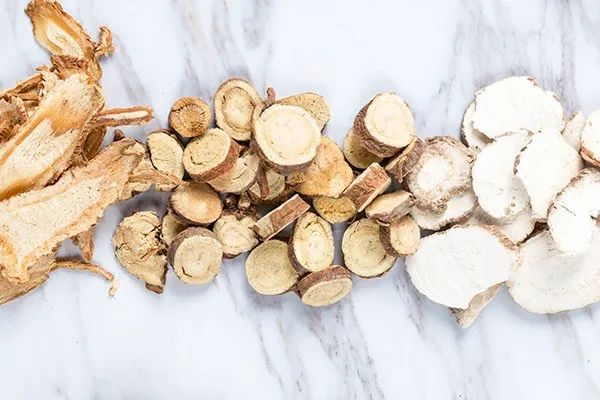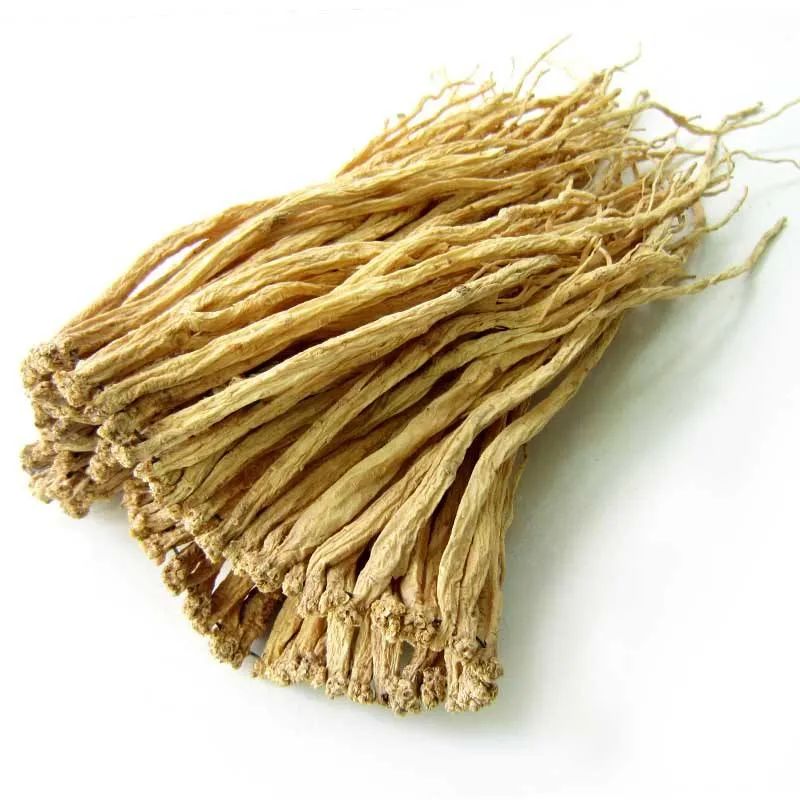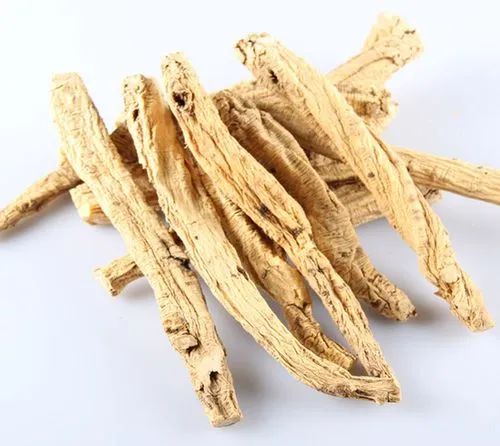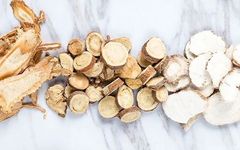
Codonopsis, also known as Dang Shen (党参), Lu Dang Shen (潞党参), and Fang Dang Shen (防党参), is a commonly used Qi-tonifying herb in Traditional Chinese Medicine (TCM). It belongs to the Campanulaceae family and is a perennial herbaceous plant with milky sap. The stem base has multiple tuberous stem scars, and the root is often large, spindle-shaped or spindle-shaped cylindrical, with few branches or slightly branched below the middle, measuring 15-30 cm in length and 1-3 cm in diameter. The surface is grayish-yellow, with fine ring patterns on the upper part measuring 5-10 cm. It is found in the mountainous forest edges and shrubs of northern China at altitudes of 1560-3100 meters. In ancient times, due to the scarcity and high price of ginseng, many people began to use Codonopsis as a substitute for ginseng as early as the Han Dynasty. It is mainly produced in Shanxi, Shaanxi, and Gansu, with the best quality coming from the Shangdang region of Shanxi. According to “Bencao Congxin” (本草从新), Codonopsis tonifies the middle and benefits Qi, harmonizes the spleen and stomach, and alleviates thirst. Let’s explore the efficacy and functions of Codonopsis, as well as its dietary recommendations and contraindications!

01
The Efficacy and Functions of Codonopsis
The first function is to tonify the middle and benefit Qi, as well as to generate fluids and alleviate thirst. It primarily has a strong Qi-tonifying effect on the upper and middle Jiao (regions), especially for patients with spleen Qi deficiency, which can lead to symptoms such as reduced appetite, abdominal distension, and diarrhea.
For patients with lung Qi deficiency, which can cause cough, scanty phlegm, and shortness of breath, Codonopsis is also effective.
The third function is for conditions such as organ prolapse caused by spleen Qi deficiency, including gastric prolapse and uterine prolapse. Codonopsis is commonly used for these conditions due to its Qi-tonifying properties.
Fourthly, it has a fluid-generating effect. It does not merely lead to significant thirst after tonifying the kidneys; rather, it generates fluids, making it useful for conditions of thirst and fluid deficiency caused by heat or diseases. Modern medicine recognizes that Codonopsis has a broad range of effects, primarily enhancing the body’s immune function and increasing the ability to resist diseases through immune regulation.

02
Dietary Recommendations and Contraindications for Codonopsis
Usage Recommendations
It is suitable for individuals with Qi deficiency and Yang deficiency. It should be avoided in cases of excess conditions or heat conditions. It is not advisable to use it alone in cases of Zheng deficiency and Xie excess. When taking Codonopsis, it is advised to avoid drinking tea. It should not be used in conjunction with Li Lu (藜芦). It can assist in general deficiency conditions and can replace ginseng; however, in cases of severe deficiency, ginseng is preferred.
Properties and Meridians
It is neutral in nature, sweet in flavor, and enters the spleen and lung meridians.
How to Select
Choose roots that are large, with many stripes and firm texture. The root tops should be rounded, commonly referred to as “lion’s head”.
Tea Preparation
Combine 10 grams of Codonopsis and roasted Astragalus (Huang Qi, 黄芪), 5 grams of Bai Zhu (白术), and 10 jujubes (Da Zao, 大枣), and decoct in water to drink as tea. This tea has immune-boosting effects.
Porridge Preparation
Use 10 grams of Codonopsis, 30 grams each of Chinese Yam (Shan Yao, 山药) and Job’s Tears (Yi Yi Ren, 薏苡仁), 10 jujubes, and 100 grams of glutinous rice (Jing Mi, 粳米) to cook porridge. This porridge can strengthen the spleen and benefit Qi.
Decoction for Anemia
For anemia: combine 10 grams each of Chai Hu (柴胡), Codonopsis, Dang Gui (当归), and Bai Shao (白芍), 15 grams of Shu Di Huang (熟地黄), 20 grams of Huang Qi, 1 gram of fresh ginger (Sheng Jiang, 生姜), and 7 jujubes. Decoct in water twice, combine the decoctions, and divide into two portions for morning and evening consumption.

【Disclaimer】: This article is sourced from the internet, and the copyright belongs to the original author. Please indicate the source when reprinting. This article is shared for the purpose of dissemination and learning exchange, and does not take responsibility for the views expressed. The various dietary therapy methods, prescriptions, and empirical formulas mentioned in the article are for reference and learning purposes only; non-professionals should not use them blindly! The advertisements in the article are automatically generated by the system and are unrelated to this account. If you have any questions, please leave a message online, and we will handle it as soon as possible. Thank you.


Click “Read the original text“↙ to see more exciting content
Recommended Reading
The 4th World Traditional Chinese Medicine Service Trade Conference “3rd Overseas National Medicine Forum” (offline and online cloud meeting) agenda
-
Incredible! A global survey report reveals, “Traditional Chinese Medicine will be the most advanced medicine in the world”
-
46 classic prescriptions of Zhang Zhongjing’s three herbs, carefully selected and shared with everyone
-
A wonderful formula that treats tinnitus, relieves tightness in the waist and back, and alleviates leg soreness
-
For stroke, hemiplegia, and paralysis, a formula that replenishes 50% of Yang Qi and treats hemiplegia

